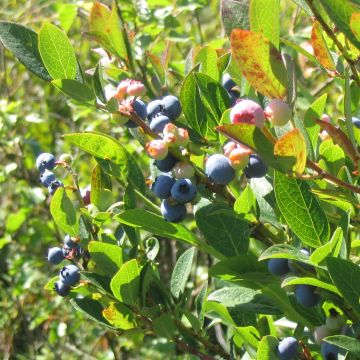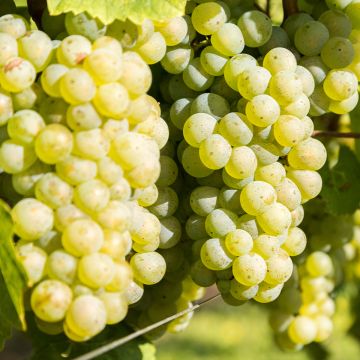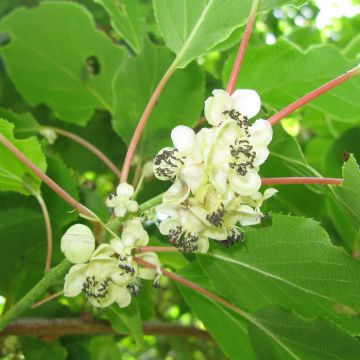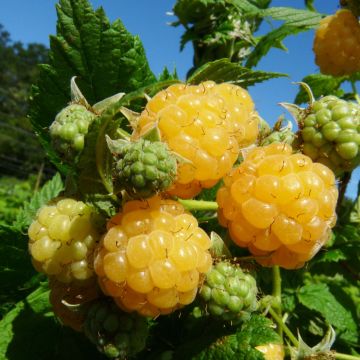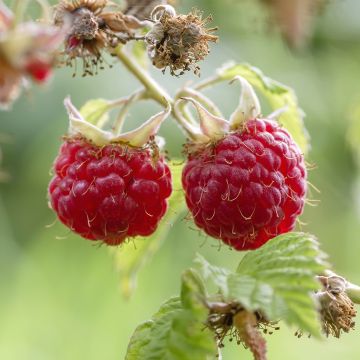

Vaccinium corymbosum Northland- American Blueberry


Vaccinium corymbosum Northland- American Blueberry
Vaccinium corymbosum Northland- American Blueberry
Vaccinium corymbosum Northland
American Blueberry, Highbush Blueberry
Le myrtillier reçu est sain, en bon état (le bout d'une branche cassée dans le transport car le carton avait été mis debout, mais rien de méchant). J'attends la reprise. Cet achat était l'occasion d'essayer la commande sans plastique, dont je suis très satisfaite.
Laetitia, 13/03/2023
This item cannot be shipped to the selected country
Delivery charge from €5.90
Delivery to Corse prohibited
More information
Schedule delivery date,
and select date in basket
This plant carries a 6 months recovery warranty
More information
We guarantee the quality of our plants for a full growing cycle, and will replace at our expense any plant that fails to recover under normal climatic and planting conditions.
From €5.90 for pickup delivery and €6.90 for home delivery
Express home delivery from €8.90.
Delivery to Corse prohibited: UE law prohibits the import of this plant from mainland France to Corse as part of the fight against Xylella fastidiosa. Please accept our sincere apologies.
More information
Description
The Vaccinium corymbosum 'Northland' is a variety that produces medium-sized fruits that are sweet and aromatic. It is a bush of medium vigour, suitable for container cultivation when the garden soil is not suitable. This bush blooms in May with small white flowers, which produce berries that can be harvested from late June. The foliage is a beautiful green during the growing season and turns to lovely shades of orange in autumn. Although this variety is self-fertile, fruit production is even more abundant when another variety is planted nearby.
The Blueberry Bush belongs to the Ericaceae family, mainly known in gardens for its numerous ornamental genera. In addition to the well-known Rhododendrons and Heather, there are edible Ericaceae fruits, primarily the Arbutus and the genus Vaccinium, including blueberries, cranberries, and lingonberries. The cultivated blueberry (Vaccinium corymbosum), native to North America, is grown in gardens for its abundant and high-quality fruit production. It is a highly cold-resistant bush with deciduous foliage that falls in autumn. It is grown in very acidic soil (devoid of limestone), with a tendency for peat and humus, in a semi-shaded position, for example, in the morning sun.
The cultivar 'Northland' is a variety with a compact, reasonably upright habit, not exceeding 1.20 to 1.30 m (4ft) in height with an equivalent or slightly larger width. It grows relatively slowly and forms a small, reasonably dense bush with deciduous foliage and a beautiful glossy green. The leaves are elliptical and pointed, and they colour beautifully in shades of orange and even red to purple in autumn. Flowering usually occurs in May, with small white bell-shaped flowers with pink edges, measuring 0.5 to 1 cm (0in) in length, arranged in pendulous clusters 2 to 5 cm (1 to 2in) long at the tips of the branches. This is followed by numerous dark blue berries with a slight bloom, ranging from small to medium in size. They ripen from late June and throughout July. Harvesting is spread out over 4 to 5 weeks, depending on the ripeness of the fruit. The production is relatively abundant and regular from year to year. These berries are sweet and aromatic, with a taste reminiscent of wild blueberries. They are delicious eaten fresh and can also be used to make pies, jams, and other desserts and dishes.
In terms of nutrition, it is worth noting that blueberries are low in calories but high in nutrients: they are very rich in vitamins A, B, and C, as well as calcium and iron. They contain pigments (anthocyanins) that improve night vision. Blueberries can be consumed freshly picked, in juice, jam, jelly, sorbet, or pastries (pies, muffins). The fruit can be stored for about ten days after picking and frozen for longer preservation.
'Northland' can be planted in groups to ensure abundant harvests, but it can also be grown in containers using an acidic substrate. Its flowering, especially its vivid autumn colours, is mainly decorative and will not look out of place among "solely ornamental" shrubs. They will complement well with shrubs that turn yellow in autumn, such as Clethra alnifolia, which also appreciates semi-shade and acidic, moist soil. You can also plant Northland at the base of a beautiful flowering dogwood, such as the remarkable Cornus kousa Satomi, with pink flowers (bracts) in June and scarlet foliage in autumn. And of course, the Hydrangeas, among which you will have plenty of choices from the wide range available, will also be excellent companions... (and if you really can't decide, why not try the Hydrangea aspera Macrophylla...).
Report an error about the product description
Vaccinium corymbosum Northland- American Blueberry in pictures


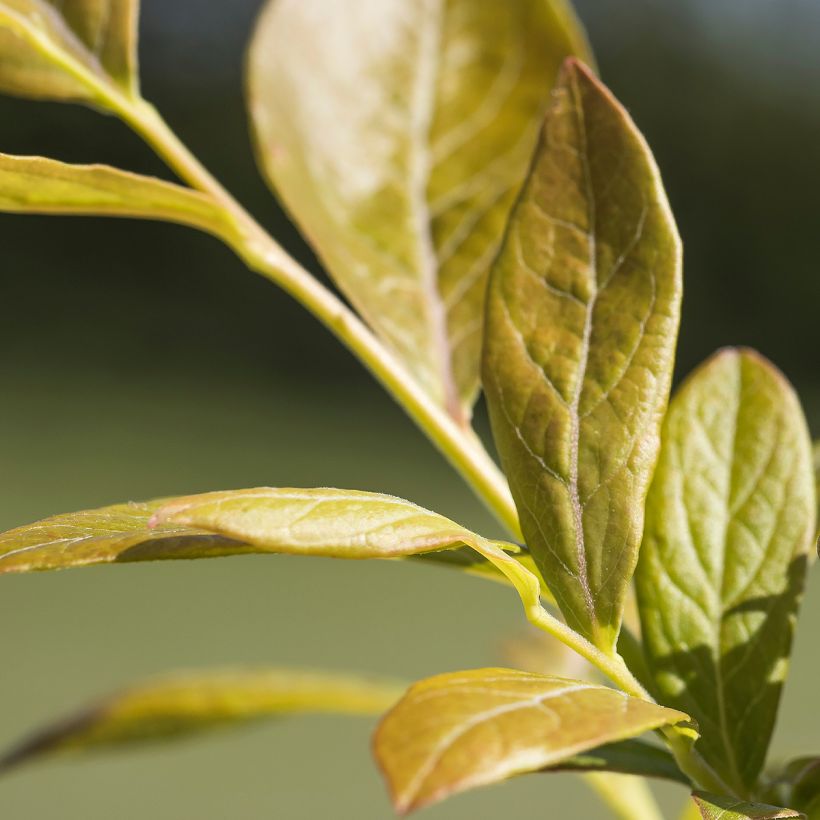



Plant habit
Fruit
Flowering
Foliage
Botanical data
Vaccinium
corymbosum
Northland
Ericaceae
American Blueberry, Highbush Blueberry
Cultivar or hybrid
Other Blueberry bush
Planting and care
Planting the Blueberry Bush is ideally done in autumn or throughout the year, avoiding frost and heatwaves. This bush should be planted in a sunny (not scorching) location in the cooler climates and strictly in partial shade in hot climates. If you plant multiple plants, space them 1.20m (4ft) apart in all directions. This Blueberry Bush is highly hardy (-30°C (-22°F) to -35°C (-31°F)) and has an exceptionally long lifespan.
Plant it in very acidic soil (pH between 4 and 5.5), incorporating pure ericaceous soil, or in a mixture of regular soil and peat, well-rotted bark compost. The collar (where the trunk meets the roots) should be level with the ground. Firmly pack the soil and water generously with non-limestone water. In slightly chalky soil, dig a hole 50 to 60cm (20 to 24in) deep, line the edges with a garden felt, place a non-chalk gravel layer of 10cm (4in) thickness at the bottom, then fill with a mixture of compost and ericaceous soil.
The soil should remain moist but not waterlogged: the plant tolerates moderate drought and dislikes stagnant moisture. If watering is necessary, use non-limestone and non-chlorinated water (e.g. rainwater collected). Mulch the base with shredded bark, straw, or fern leaves. It is sometimes helpful to place a protective net if birds become too greedy during harvest. In spring, annually, apply a little well-rotted compost on the surface. The Blueberry Bush is not very susceptible to diseases and pests.
This variety is very compact, so you can grow it in a pot, especially if your soil is chalky.
Planting period
Intended location
Care
-
, onOrder confirmed
Reply from on Promesse de fleurs
Berries
Haven't found what you were looking for?
Hardiness is the lowest winter temperature a plant can endure without suffering serious damage or even dying. However, hardiness is affected by location (a sheltered area, such as a patio), protection (winter cover) and soil type (hardiness is improved by well-drained soil).

Photo Sharing Terms & Conditions
In order to encourage gardeners to interact and share their experiences, Promesse de fleurs offers various media enabling content to be uploaded onto its Site - in particular via the ‘Photo sharing’ module.
The User agrees to refrain from:
- Posting any content that is illegal, prejudicial, insulting, racist, inciteful to hatred, revisionist, contrary to public decency, that infringes on privacy or on the privacy rights of third parties, in particular the publicity rights of persons and goods, intellectual property rights, or the right to privacy.
- Submitting content on behalf of a third party;
- Impersonate the identity of a third party and/or publish any personal information about a third party;
In general, the User undertakes to refrain from any unethical behaviour.
All Content (in particular text, comments, files, images, photos, videos, creative works, etc.), which may be subject to property or intellectual property rights, image or other private rights, shall remain the property of the User, subject to the limited rights granted by the terms of the licence granted by Promesse de fleurs as stated below. Users are at liberty to publish or not to publish such Content on the Site, notably via the ‘Photo Sharing’ facility, and accept that this Content shall be made public and freely accessible, notably on the Internet.
Users further acknowledge, undertake to have ,and guarantee that they hold all necessary rights and permissions to publish such material on the Site, in particular with regard to the legislation in force pertaining to any privacy, property, intellectual property, image, or contractual rights, or rights of any other nature. By publishing such Content on the Site, Users acknowledge accepting full liability as publishers of the Content within the meaning of the law, and grant Promesse de fleurs, free of charge, an inclusive, worldwide licence for the said Content for the entire duration of its publication, including all reproduction, representation, up/downloading, displaying, performing, transmission, and storage rights.
Users also grant permission for their name to be linked to the Content and accept that this link may not always be made available.
By engaging in posting material, Users consent to their Content becoming automatically accessible on the Internet, in particular on other sites and/or blogs and/or web pages of the Promesse de fleurs site, including in particular social pages and the Promesse de fleurs catalogue.
Users may secure the removal of entrusted content free of charge by issuing a simple request via our contact form.
The flowering period indicated on our website applies to countries and regions located in USDA zone 8 (France, the United Kingdom, Ireland, the Netherlands, etc.)
It will vary according to where you live:
- In zones 9 to 10 (Italy, Spain, Greece, etc.), flowering will occur about 2 to 4 weeks earlier.
- In zones 6 to 7 (Germany, Poland, Slovenia, and lower mountainous regions), flowering will be delayed by 2 to 3 weeks.
- In zone 5 (Central Europe, Scandinavia), blooming will be delayed by 3 to 5 weeks.
In temperate climates, pruning of spring-flowering shrubs (forsythia, spireas, etc.) should be done just after flowering.
Pruning of summer-flowering shrubs (Indian Lilac, Perovskia, etc.) can be done in winter or spring.
In cold regions as well as with frost-sensitive plants, avoid pruning too early when severe frosts may still occur.
The planting period indicated on our website applies to countries and regions located in USDA zone 8 (France, United Kingdom, Ireland, Netherlands).
It will vary according to where you live:
- In Mediterranean zones (Marseille, Madrid, Milan, etc.), autumn and winter are the best planting periods.
- In continental zones (Strasbourg, Munich, Vienna, etc.), delay planting by 2 to 3 weeks in spring and bring it forward by 2 to 4 weeks in autumn.
- In mountainous regions (the Alps, Pyrenees, Carpathians, etc.), it is best to plant in late spring (May-June) or late summer (August-September).
The harvesting period indicated on our website applies to countries and regions in USDA zone 8 (France, England, Ireland, the Netherlands).
In colder areas (Scandinavia, Poland, Austria...) fruit and vegetable harvests are likely to be delayed by 3-4 weeks.
In warmer areas (Italy, Spain, Greece, etc.), harvesting will probably take place earlier, depending on weather conditions.
The sowing periods indicated on our website apply to countries and regions within USDA Zone 8 (France, UK, Ireland, Netherlands).
In colder areas (Scandinavia, Poland, Austria...), delay any outdoor sowing by 3-4 weeks, or sow under glass.
In warmer climes (Italy, Spain, Greece, etc.), bring outdoor sowing forward by a few weeks.










































